LANDSCAPES

Peninsula Open Space Trust
Fall 2023


Fall 2023
It’s unbelievable that a decade has passed since I joined POST — our ever-changing work keeps me on my toes! There’s a steady flow of projects to restore and care for our region’s landscapes, improving their health and helping get them ready for the future.
Recently, POST reached a milestone when we transferred most of Cloverdale Ranch to our partners at Midpeninsula Regional Open Space District for permanent management. For 26 years, we owned and stewarded this expansive property on the San Mateo County coast. We improved habitat for native fish by reducing erosion and restoring a floodplain. We removed invasive species and worked with ranchers who practice sustainable grazing to enhance grasslands for native birds. And we helped secure an agricultural future
on the coast by providing farms with essential infrastructure. I’m proud that we handed the land to our partners in such good shape.
This exemplifies how, often, nature benefits from a helping hand. Under the care of Native people, local ecosystems flourished for millennia. But today the land POST protects is rarely in perfect condition when we take ownership — sometimes having been neglected for decades. Wildlife who call our region home need help, too, struggling due to habitat fragmentation and degradation. These are all situations we aim to address.
In this issue of Landscapes, you’ll read about Calero Lakeview, a property POST protected in 2019. The landscape is rich in natural resources and could potentially expand public access for thousands of people — but it needed significant restoration before we could transfer it to Santa Clara County Parks. You’ll learn about burrowing owls, a species of special concern that has
almost been wiped out locally due to human encroachment, and how POST and our partners are reintroducing them on land we protected. Finally, there’s Lakeside Ranch, one of our most recent acquisitions that encompasses a wide array of habitats for abundant native species. Protecting it also ensures that wildlife have a safe corridor to move between local mountain ranges.
I hope you enjoy reading about these projects as much as we enjoyed working on them! It’s thanks to the support of donors like you that we’re able to conserve important landscapes and find the most effective ways to increase their resilience and the benefits they provide.
Warm regards,
 Daniel Olstein Director of Land Stewardship
Daniel Olstein Director of Land Stewardship

2 Lakeside Ranch: A Huge Win For Wildlife Connectivity
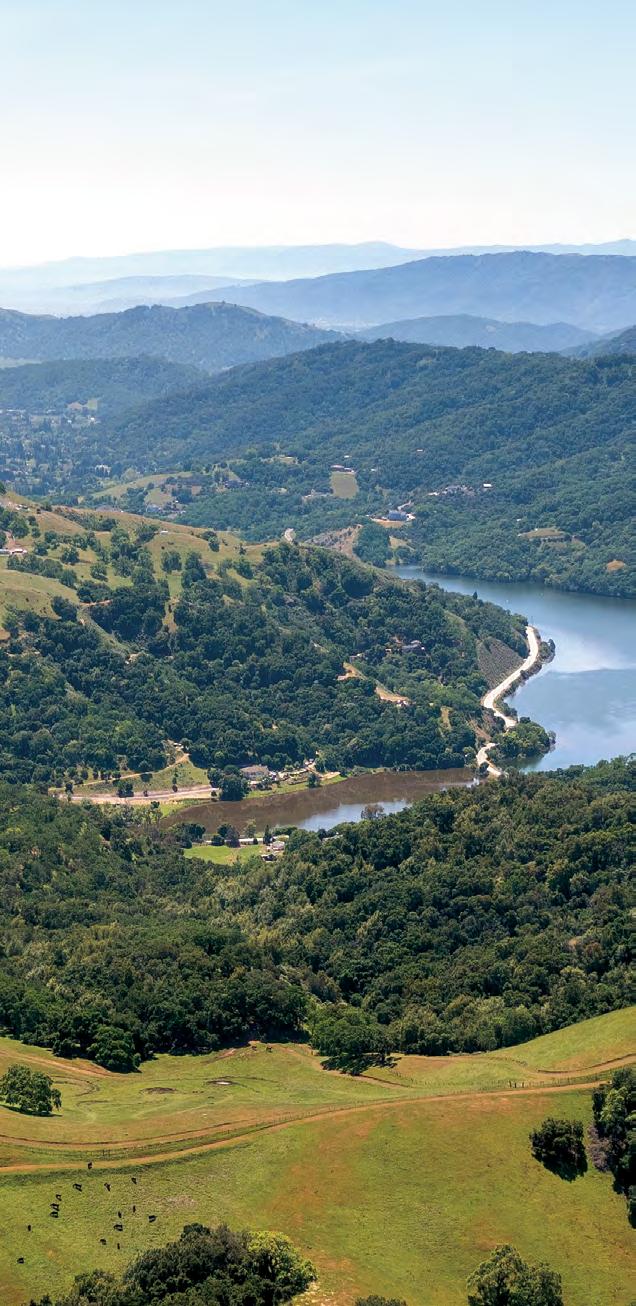
4 A Landscape Renewed: Calero Lakeview
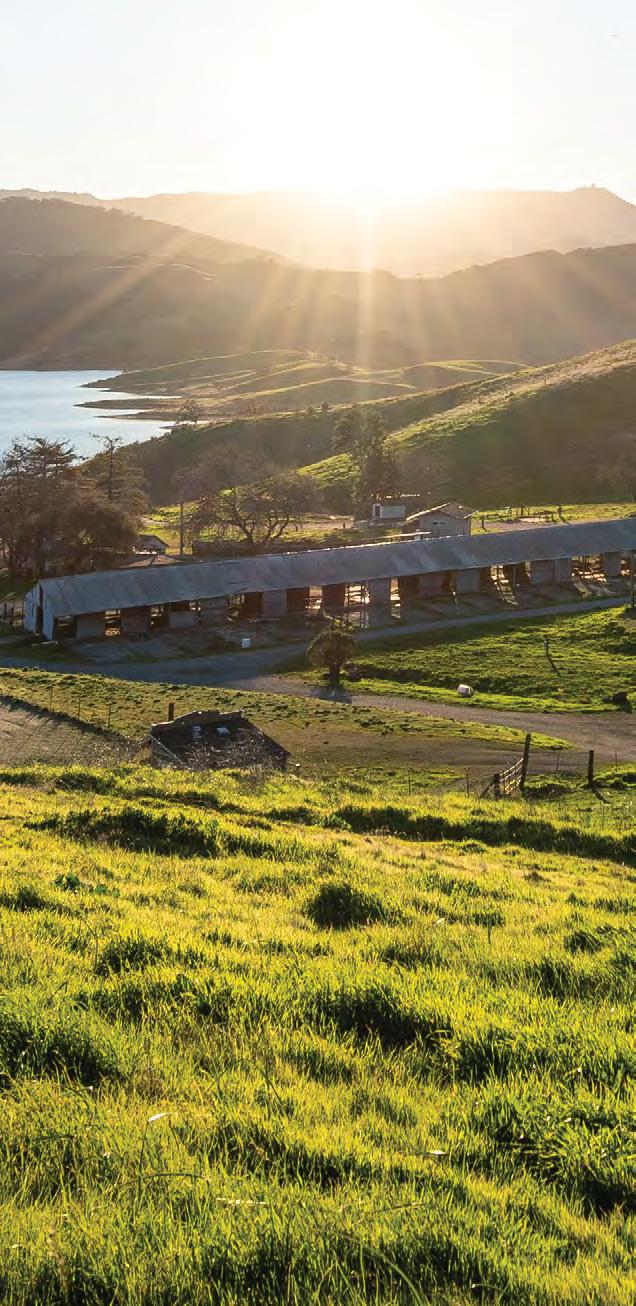
8
On The Brink: Burrowing Owls Find Sanctuary
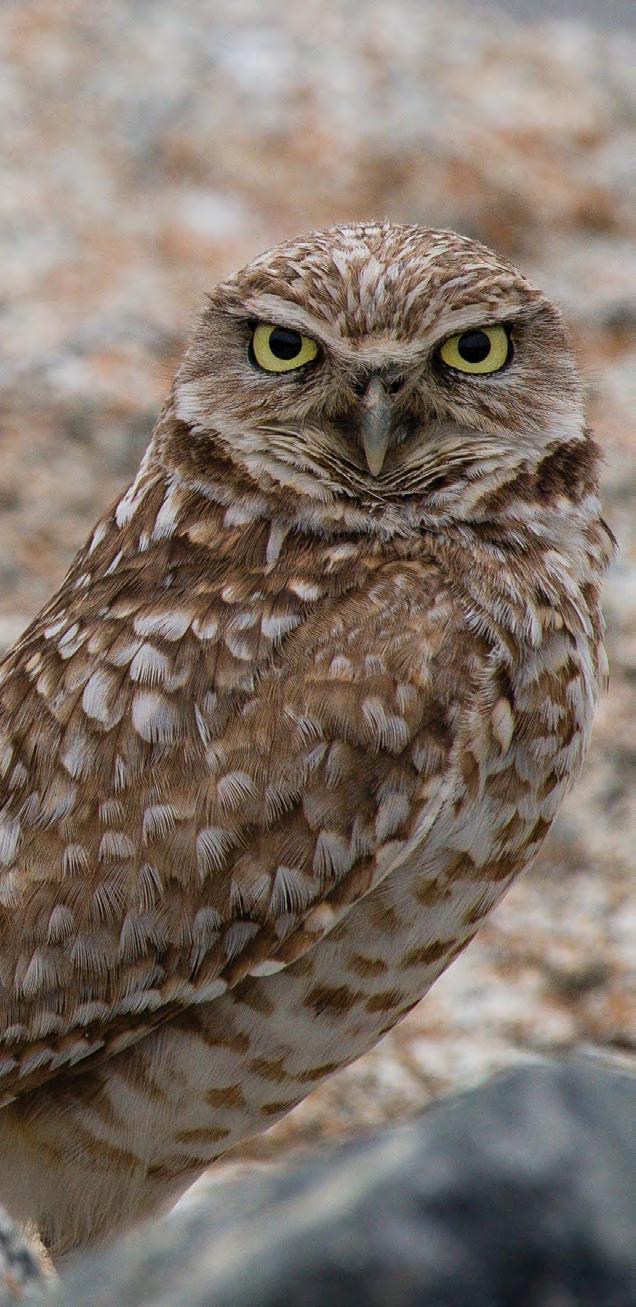
Last spring, we shared some truly remarkable news! As of March, POST holds the keys to Lakeside Ranch, an expansive 1,986-acre property in the eastern foothills of the Santa Cruz Mountains. The $22.36 million investment was made possible through the support of our incredible donors and the Gordon and Betty Moore Foundation. This glorious landscape, located between San Jose and Morgan Hill, has been a top conservation priority in our region for decades — and protecting it is a win for nature and people alike.
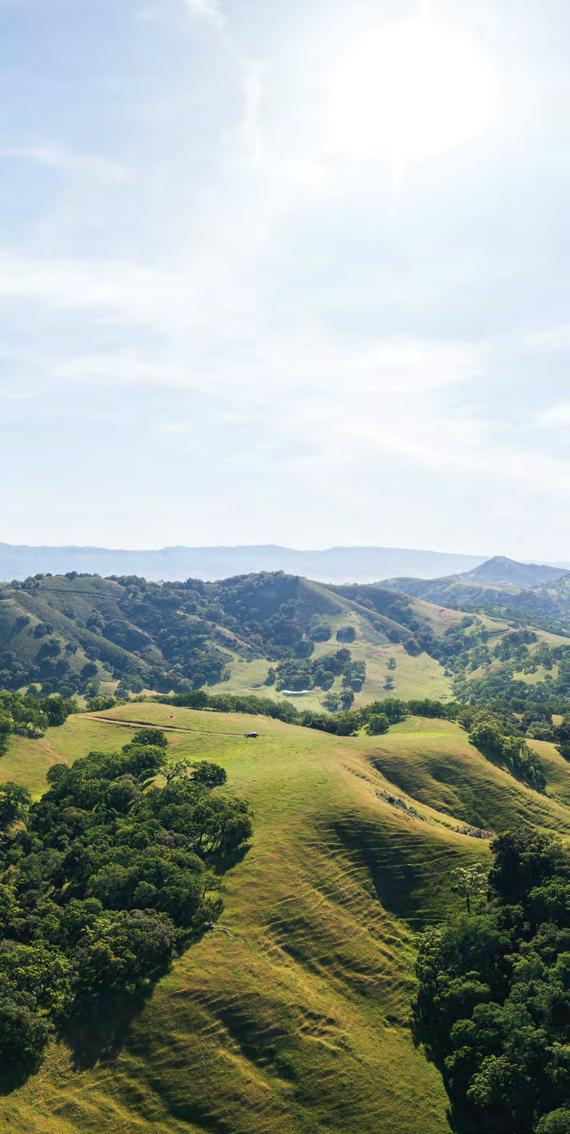
As one of largest remaining intact ranches in the South Bay, Lakeside Ranch boasts striking views, mature oak
woodlands and grasslands that native species call home. The glistening Llagas Creek runs through the property, flowing south to the Chesbro Reservoir and the Pajaro River beyond.
What’s more, with this property in the mix, over 8,700 acres of natural and working lands in and around Coyote Valley have now been protected. This region is essential for wildlife moving between the Santa Cruz Mountains in the west, the Diablo range in the east and the Gabilan range to the south. Safeguarding these routes from development is crucial to maintaining biodiversity for animals seeking mates, shelter and food.
Rich in biodiversity, Lakeside Ranch includes habitat for numerous animal species and many California endemic plant species. These include the western pond turtle, mountain lion, California tiger salamander, Bay checkerspot butterfly, Santa Clara Valley dudleya, pink creamsacs, serpentine leptosiphon, Hall’s bush mallow, most beautiful jewelflower and smooth lessingia.
By expanding the South Bay’s protected open space, nearby communities benefit from the fresh air and water it provides. There’s potential, too, for one day expanding outdoor trail connections in the area.
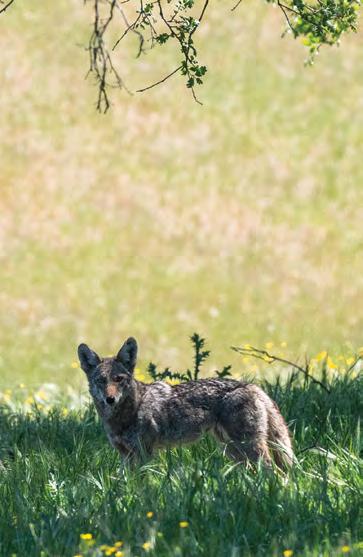
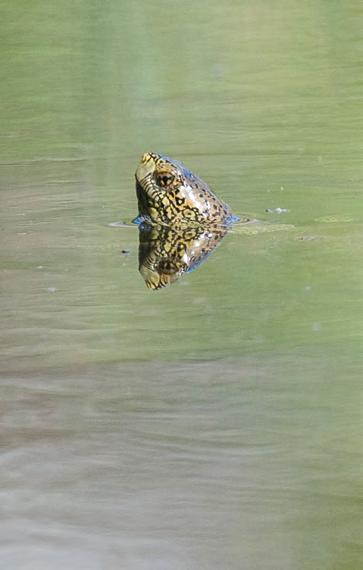
We are currently collaborating with the Santa Clara Valley Habitat Agency on an ownership and stewardship plan for Lakeside Ranch. In the future, we’ll be exploring opportunities for long-term use, management and ownership with Santa Clara Valley Open Space Authority and Santa Clara County Parks. Together, we are committed to preserving this remarkable landscape and fostering its ecological vitality for generations to come.
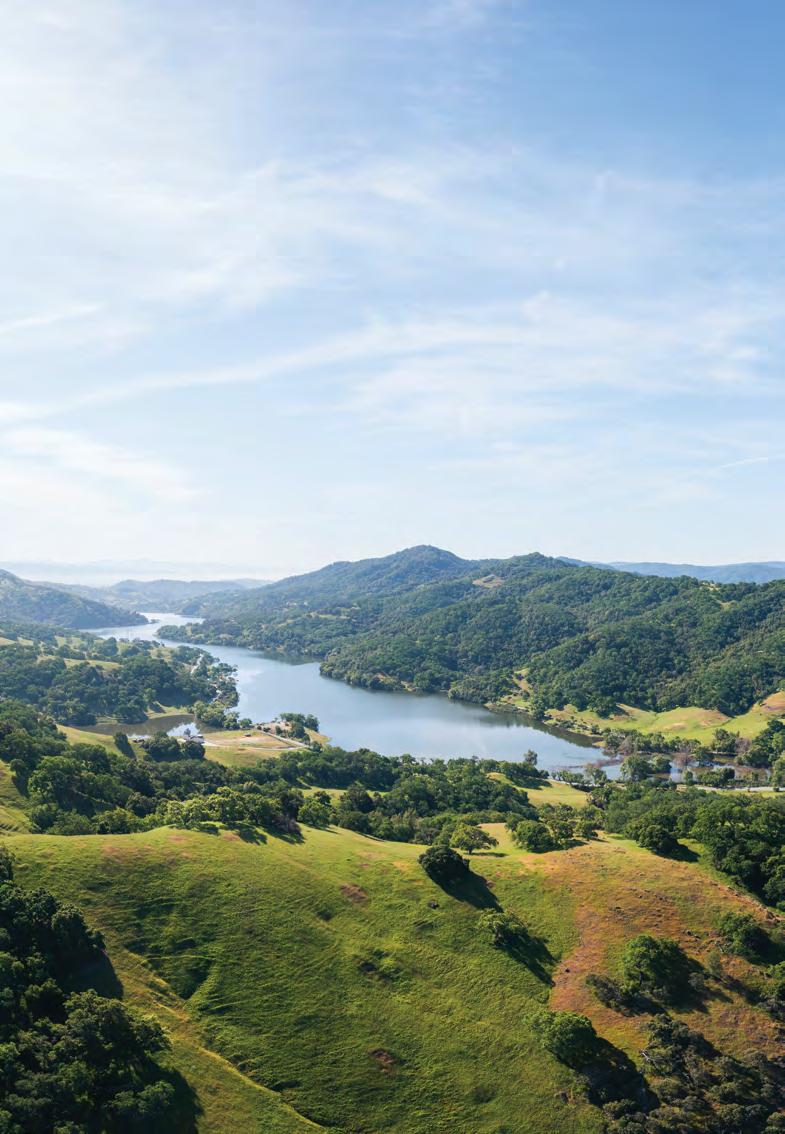
Together, we are committed to preserving this remarkable landscape and fostering its ecological vitality for generations to come.
Last May, POST reached a longsought milestone by transferring the 136-acre Calero Lakeview property to our colleagues at Santa Clara County Parks (County Parks). POST acquired this important connective property in 2019 and spent the following years restoring it. Nestled in South San Jose’s verdant Almaden Valley, it features stunning views of Coyote Valley and Mount Umunhum across Calero Reservoir. The property was a priority due to a high threat of development and its location between other protected lands in the region.
Recreation enthusiasts will delight that Calero Lakeview provides the exciting opportunity to connect a pair of beloved County Parks — Calero and Santa Teresa — with a future trail. It’s also vital for wildlife connectivity between the Santa Cruz Mountains and the Diablo Range.
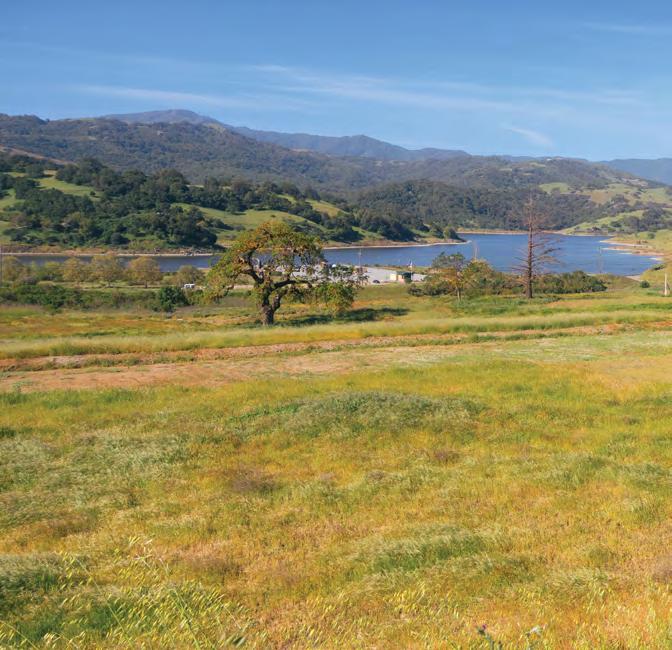
It was clear from the start that Calero Lakeview had great potential for wildlife and public access alike. That said, there was much work to do to restore this landscape to a level
appropriate for both human and wildlife use. With a lot of elbow grease, we knew we could give this property a new, healthier lease on life.
As a private nonprofit, POST can carry out complex stewardship projects that include restoration, permitting, planning and more with a mix of speed, agility and grace. Before transferring land to public agencies like County Parks, we take steps to leave the
property in better shape than we found it. We assess the situation, then repair and enhance natural resources. This involves removing dangerous structures, addressing environmental hazards and debris, and preparing the landscape for a better future. Once this is complete, it is much easier for agencies like County Parks to take over managing the property and start planning for its future.
When POST acquired Calero Lakeview, it included an aging boarding facility for horses that had operated on the property for decades. After exploring all of the ways we might maintain it, POST and County Parks made the difficult choice to shut it down and remove the structures due to their extreme disrepair and lack of code compliance. In the end, the price tag to bring them up to usable standards
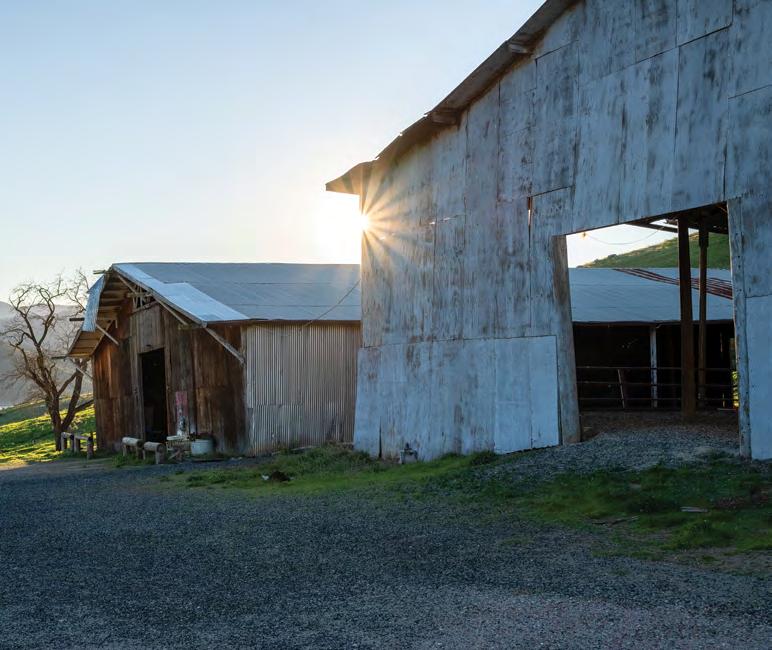
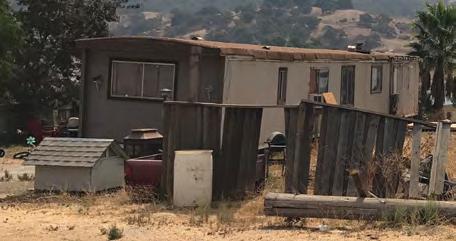
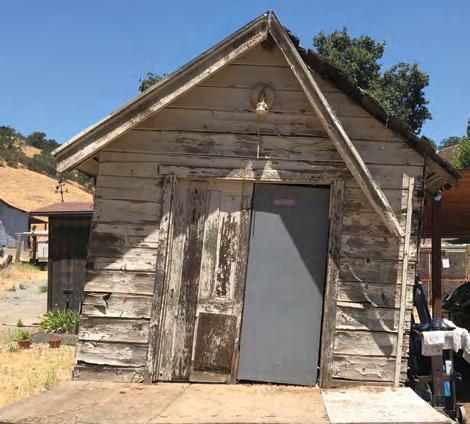
and ensure ongoing operations and maintenance was simply too high. It was a painful decision, but the landscape now holds new promise: Its natural resources are in better shape after addressing contaminated soil and upgrading boundary fencing with a new wildlife-friendly design. Plus, one day thousands of people may enjoy this as an extension of nearby parks.
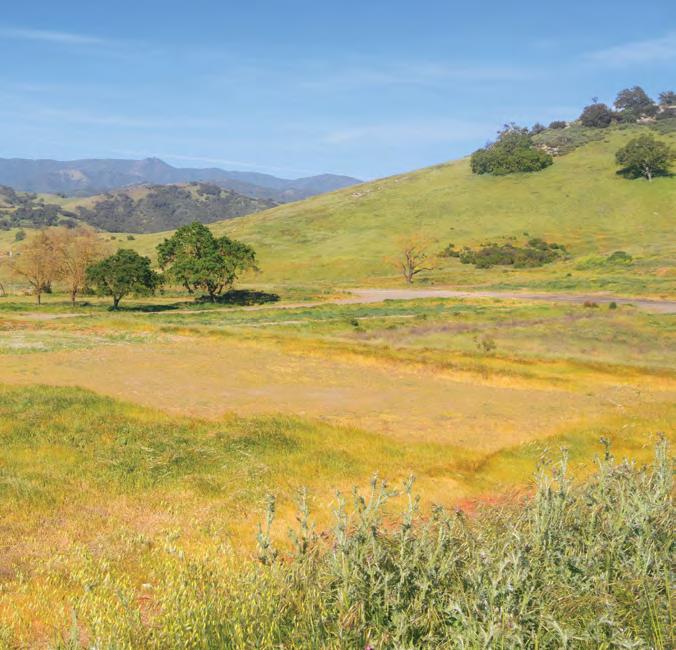
We knew we could give this property a new, healthier lease on life.
It’s a common misconception that the lands we protect are in pristine condition. Calero Lakeview is a perfect case in point that they are not. Here are some highlights illustrating what it took for POST to restore the landscape.
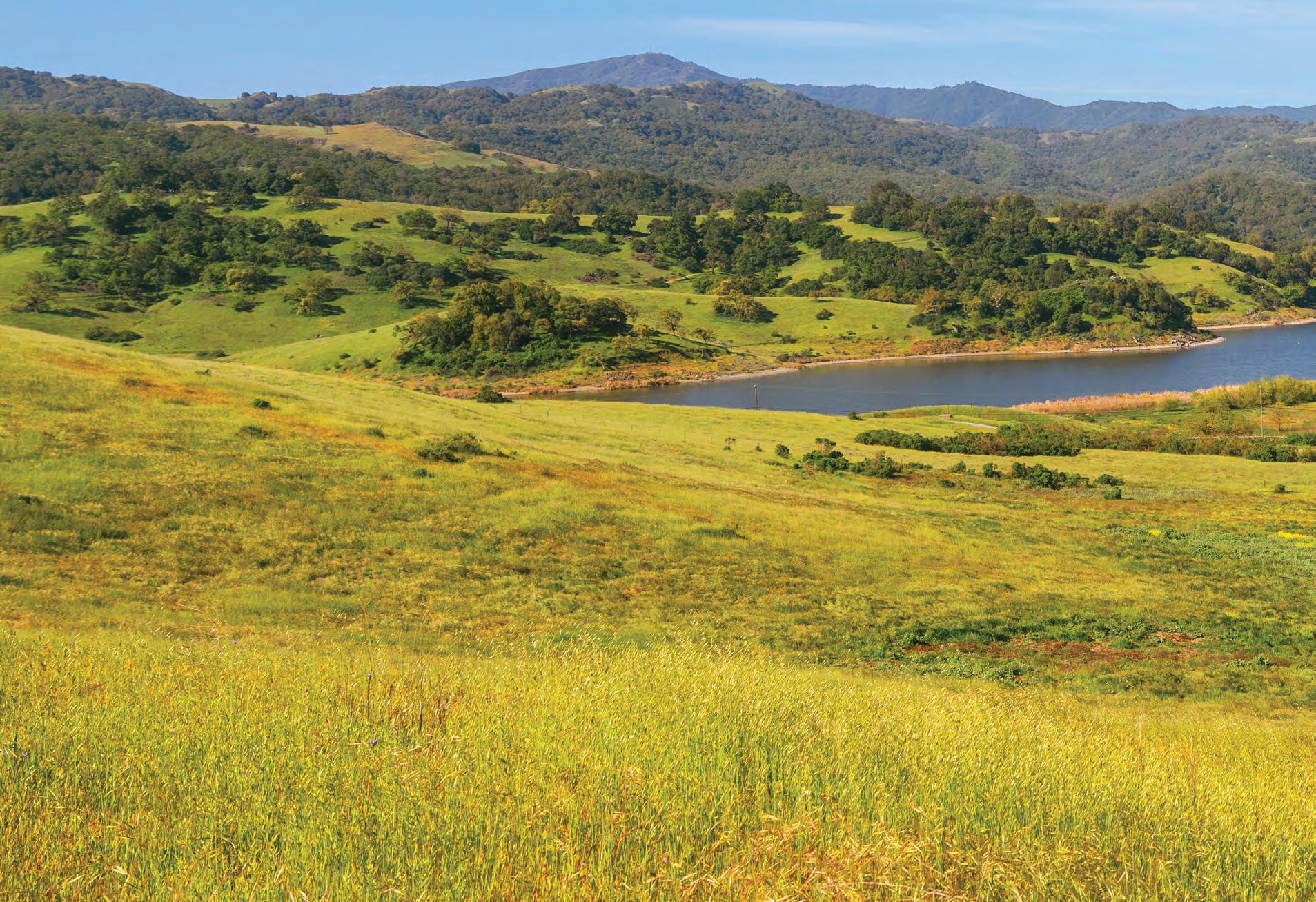
three ACRES WITH CONTAMINATED
SOILS RESTORED
After disposing of the soils, we hydroseeded the area with a native barley seed mix.
SPECIES OF INVASIVE WEEDS TREATED
These included stinkwort, purple starthistle, black mustard and perennial pepperweed.
seven
CHEMICALS OF CONCERN ADDRESSED
These included dieldrin, endrin, heptachlor epoxide, lead, mercury, chlordane and zinc.
MAJOR STRUCTURES REMOVED
This was necessary before transferring the property to County Parks.
450 FEET OF RANCH ROAD DECOMMISSIONED
This increased grassland habitat and minimized erosion and unnecessary human impacts.
LINEAR FEET OF BOUNDARY FENCING UPGRADED
New wildlife-friendly design supports the region’s biodiversity.
2,200,000
POUNDS OF CONTAMINATED SOIL REMOVED
With the landscape restored, Calero Lakeview gets a fresh start.
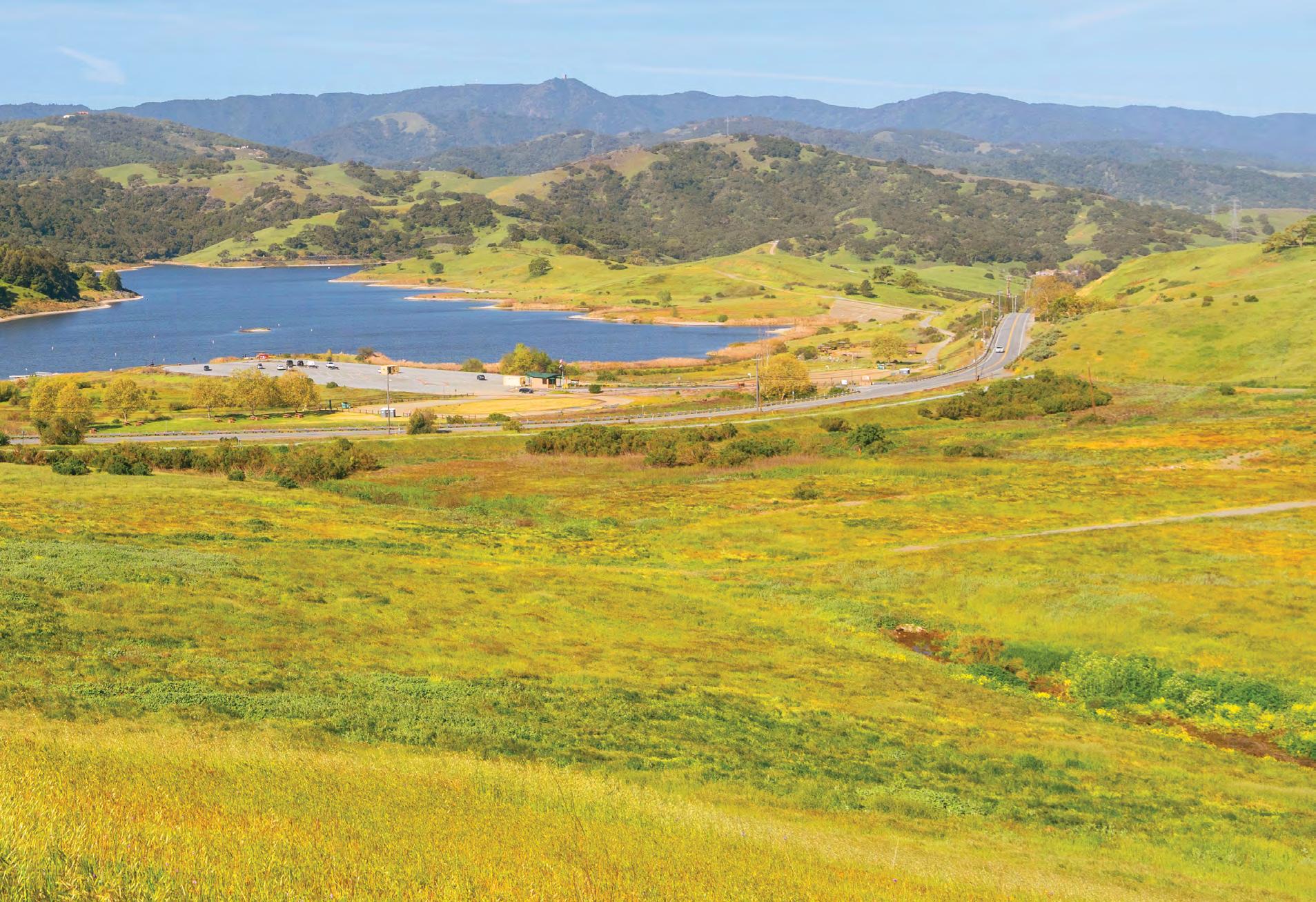
Charismatic and adorable, burrowing owls are a precious sight. But the sobering truth is that they’re increasingly rare in our region because so much of their habitat has disappeared. This is why it’s crucial for POST to continue our work to protect open space and restore habitats like theirs. Along with our network of partners, we share a vision for abundant, healthy landscapes where wildlife can once again thrive.
Back in 1979, California designated burrowing owls a species of special concern. By the late 1980s, about 500 burrowing owls frequented 250 breeding locations across Santa Clara County. With the tech boom well underway, a rapidly growing human population caused urban areas to expand and suitable grassland habitat to shrink.
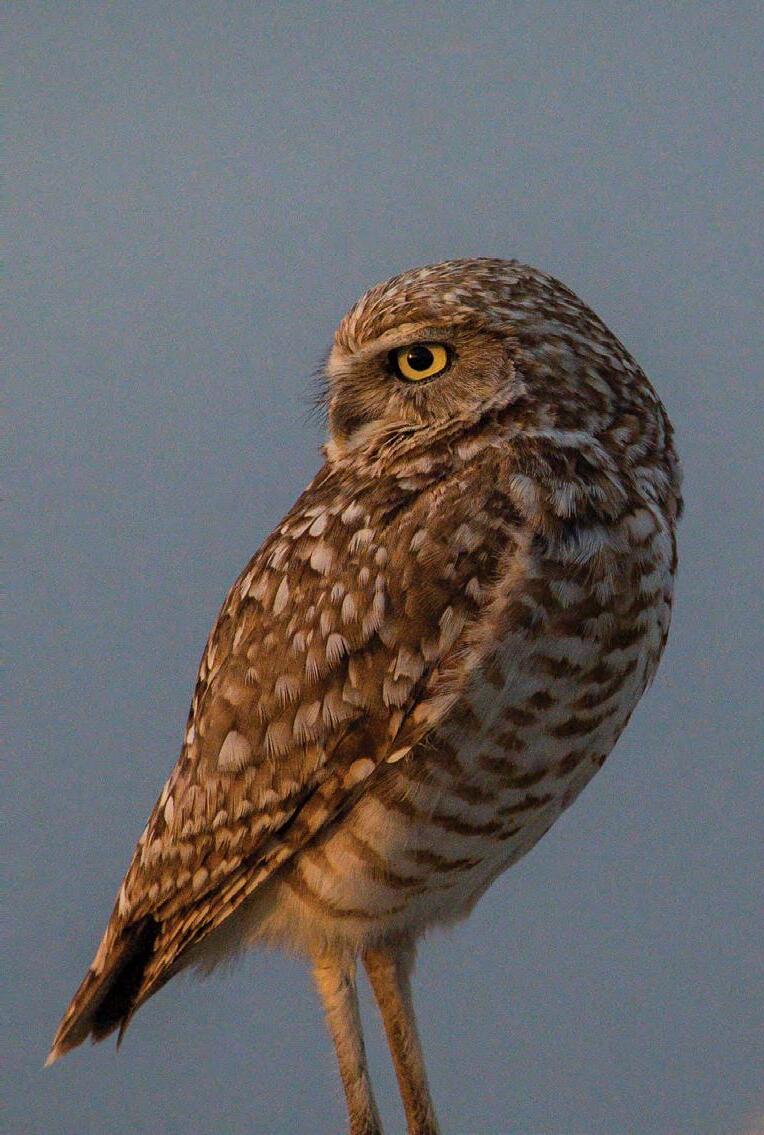
We’re now down to just four breeding locations and about 40 adult burrowing owls. These creatures predominantly dwell in what is now the urban area of Northern Santa Clara County. Due to construction, aircraft and other human disturbances, the remaining breeding locations are far from ideal.
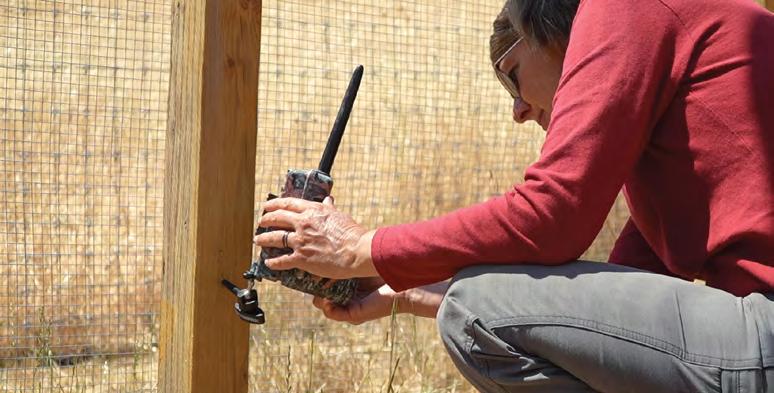
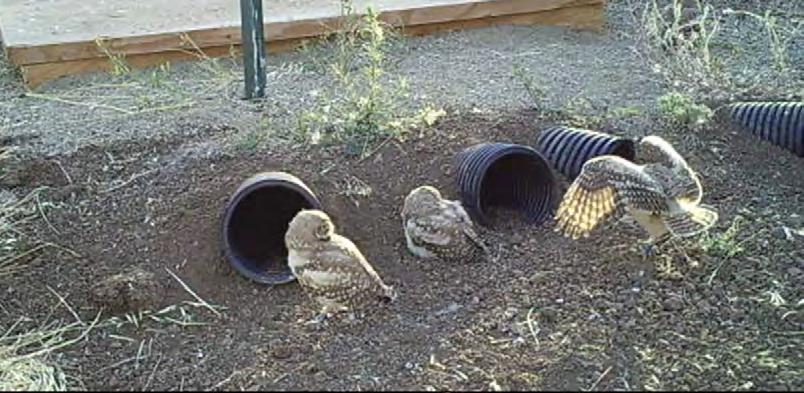
Their breeding season lasts from February to August and it’s a particularly harrowing time for these brown-mottled birds. Because of many threats — from predation to dwindling habitat — just 25% of their young will survive their first winter. It’s essential that humans steer clear of their nesting sites. Despite disheartening odds, burrowing owls deserve a fighting chance to survive.
The good news is that POST and the Santa Clara Valley Open Space Authority are supporting the Santa Clara Valley Habitat Agency and Talon Ecological Research Group on a project that aims to give burrowing owls safe, private places to nest. After spending time at a captive breeding center while their future homes were being prepared, several burrowing owl pairs now inhabit a portion of POST-protected land in a rural part of Santa Clara County. As of late August, researchers had banded 26 fledglings at the site from five nests! We’re thrilled (and cautiously optimistic) about this promising development.
We’re hardly out of the woods yet, though. Curious human visitors easily unsettle burrowing owls. It’s critical that people keep their distance from the birds — and other wildlife in general — so as not to spook them or disturb their habitat. Despite best intentions, if adult owls feel unsafe when birders approach, they might even abandon their nests. It’s a grave risk we’re unwilling to take.
Burrowing owls and artificial burrows at the captive breeding center.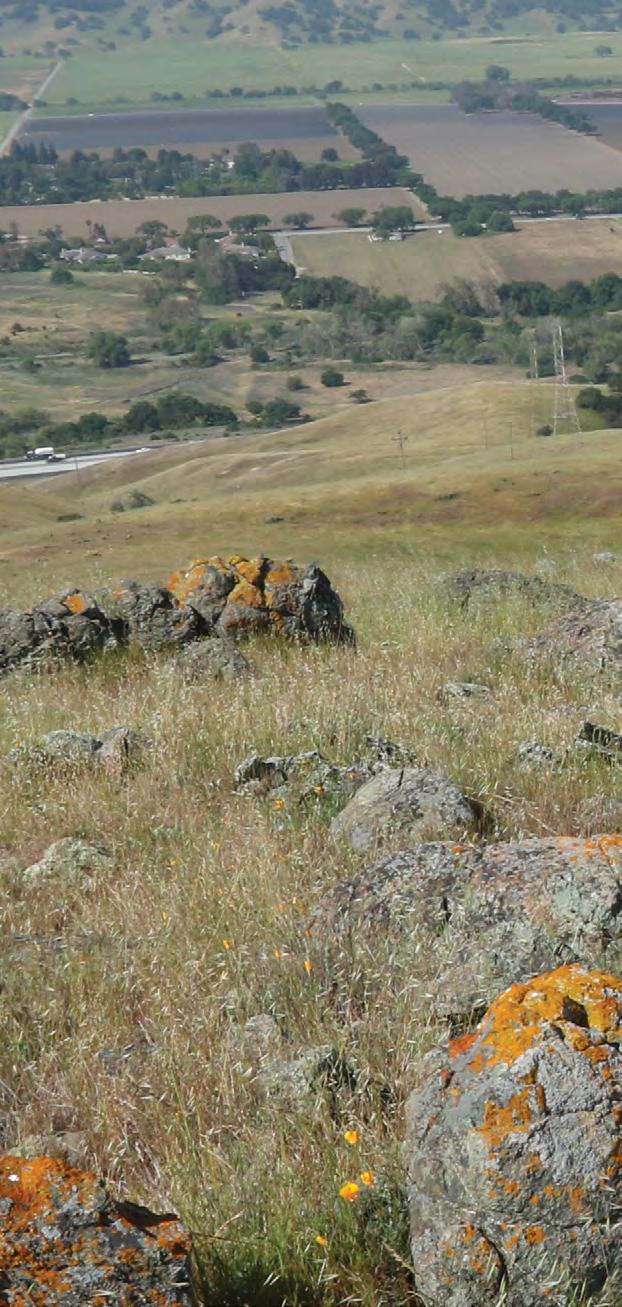
Did you know that, of the 140 species of owls in the world, burrowing owls are the only ones who roost and nest underground? Curiously enough, these enterprising birds don’t dig their own dwellings. Instead, they inhabit the empty burrows of neighboring animals who spend most of their time underground. In the Bay Area, they rely on a familiar expert excavator: the California ground squirrel.
The pair share many natural predators including coyotes, foxes, bobcats, badgers, hawks and snakes. This means the two species can look out for each other. Remarkably, they recognize one another’s warning calls when a predator’s nearby, enabling both to hide underground until the coast clears. Because ground squirrels far outnumber burrowing owls, they help reduce the bird’s risk of predation.
Looking to learn more? Here are five fun things to know about these amazing owls:
In the breeding season, however, males spend more time above ground in the daytime, guarding their burrows and hunting for food for their offspring and mates. As a result, they may have lighter plumage than their female counterparts.
Occasionally, the birds coo, warble, rasp, cluck and even scream. When cornered, young owls produce a call that mimics a rattlesnake’s signature sound.
They collect objects to decorate THEIR BURROW ENTRANCES!
Their treasures include everything from bottle caps to feathers to soy sauce packets.
Each female burrowing owl can lay up to twelve EGGS IN A SEASON.
Some burrowing owls have a fascinating (ALBEIT
They adorn the entrances to their burrows with dung from a variety of species, such as geese, cows or dogs. Scientists speculate that they aim to lure prey (like dung beetles and other insects) to their homes. Another hypothesis: they’re trying to cover up their scent to throw off their many predators.
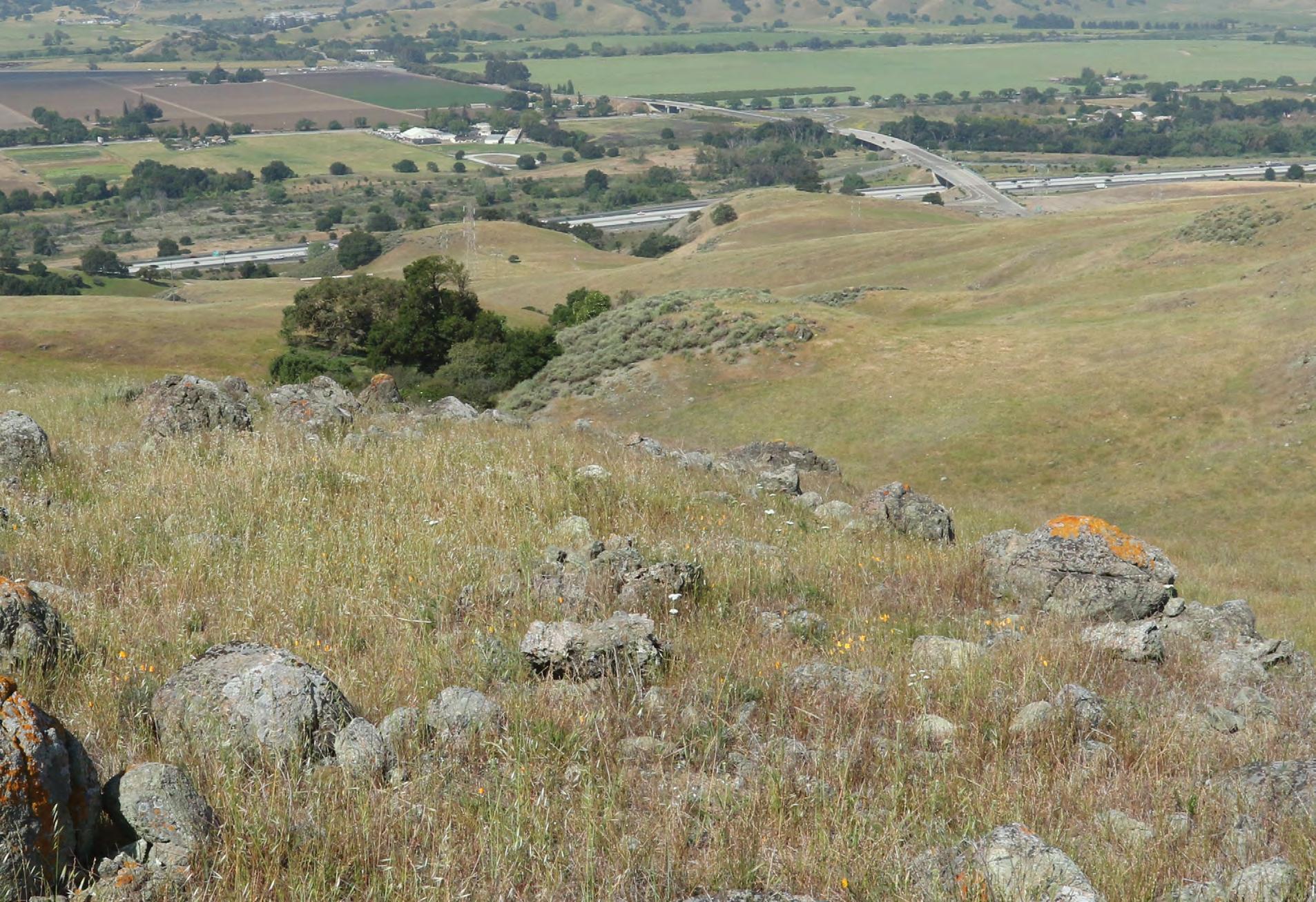
Have you checked out our events recently? You can lend nature a helping hand, too! We collaborate with partner organizations to offer volunteer workdays throughout the year so that everyone can play a part in improving our home.
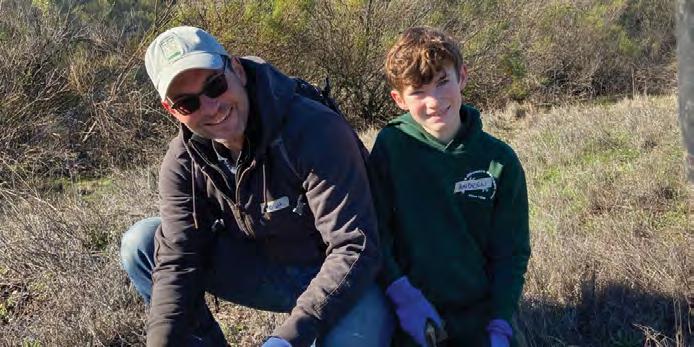

Our group hikes are another great way to spend quality time in nature. You’ll meet incredible people and learn more about our local landscapes, including how POST — and community members just like you! — played a role in protecting and caring for them.
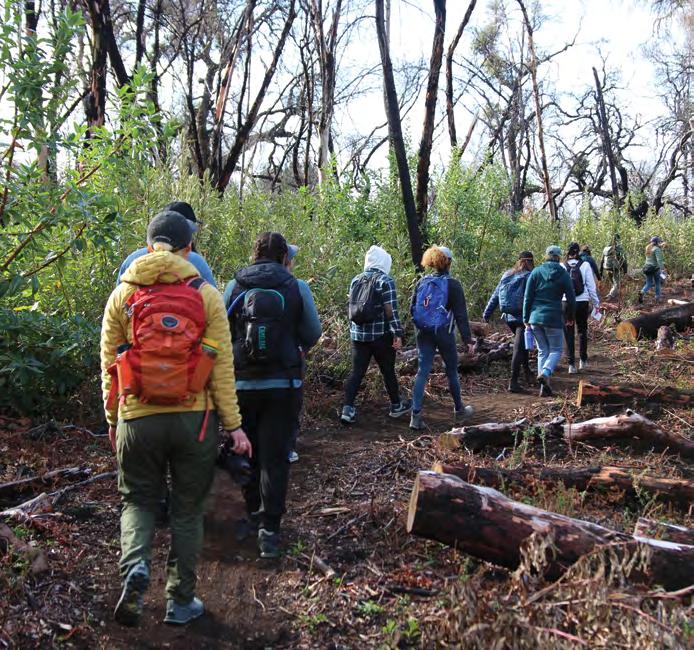
Saturday, September 30
Representation Matters Film Festival at Camino Brewing in San Jose
Saturday, October 14
Family Nature Day at Huddart Park
Saturday, November 4
Raptor Fest at Calero County Park
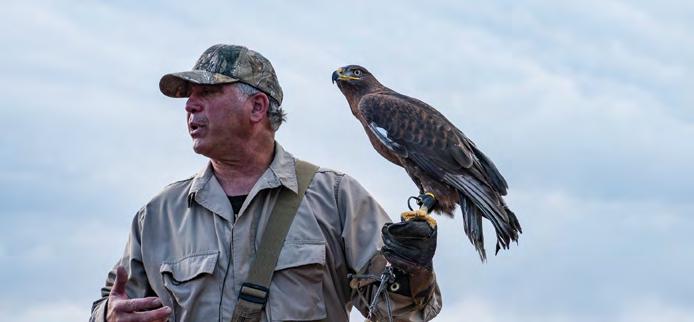

See everything we have to offer: OpenSpaceTrust.org/Events
We look forward to seeing you soon!
The land in POST’s working area has been home to many distinct communities of Native people since time immemorial.
We work to conserve and care for these lands — the ancestral territory of at least four contemporary Indigenous communities: the Amah Mutsun Tribal Band, Muwekma Ohlone, Ramaytush Ohlone and Tamien Nation. These groups have survived centuries of oppression and displacement, and are the past, present and future caretakers of this land.
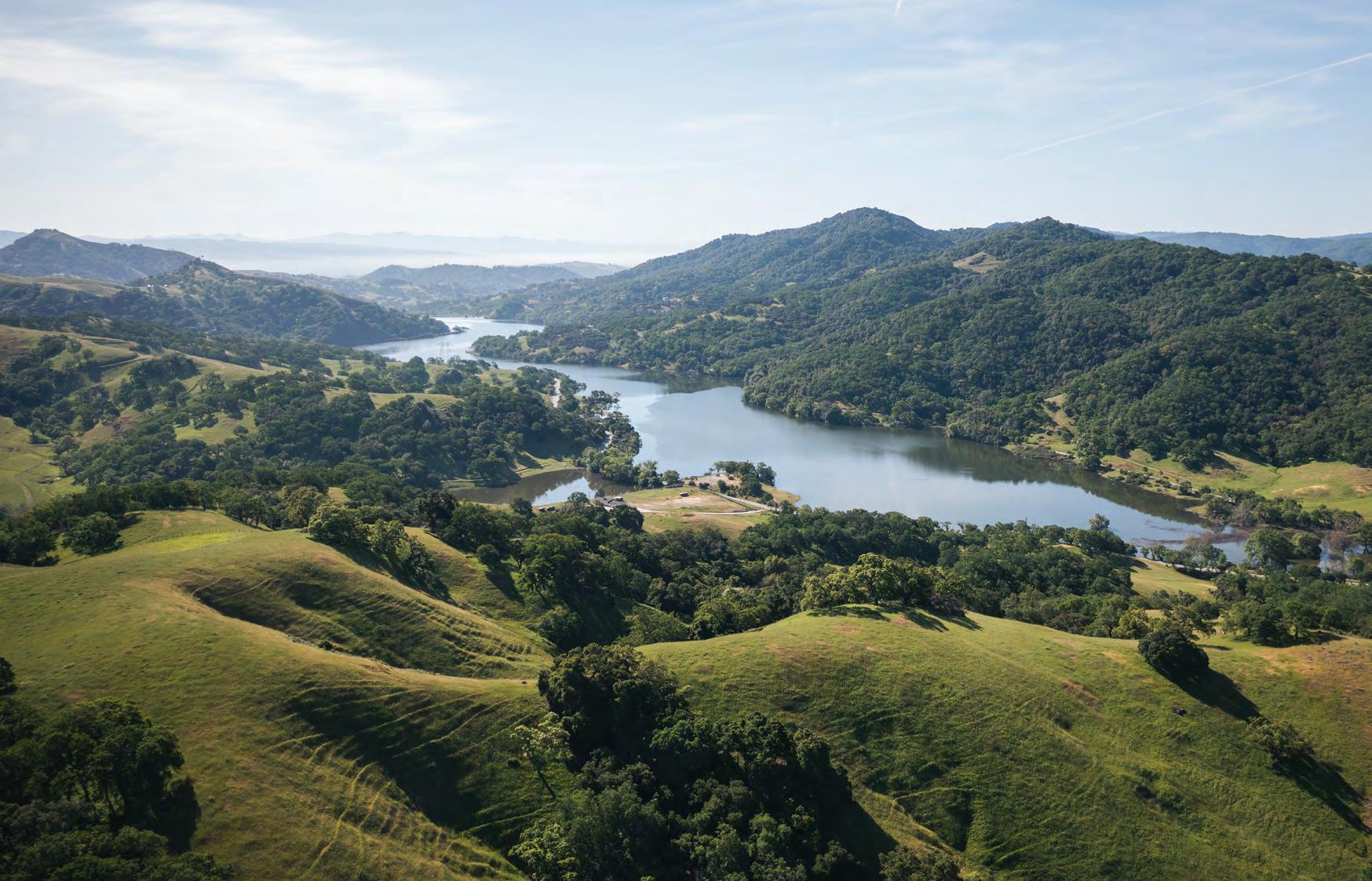
and together, we are creating a resilient future. Your support helps us protect wildlife habitat, make regional trail connections and care for our spectacular landscapes.
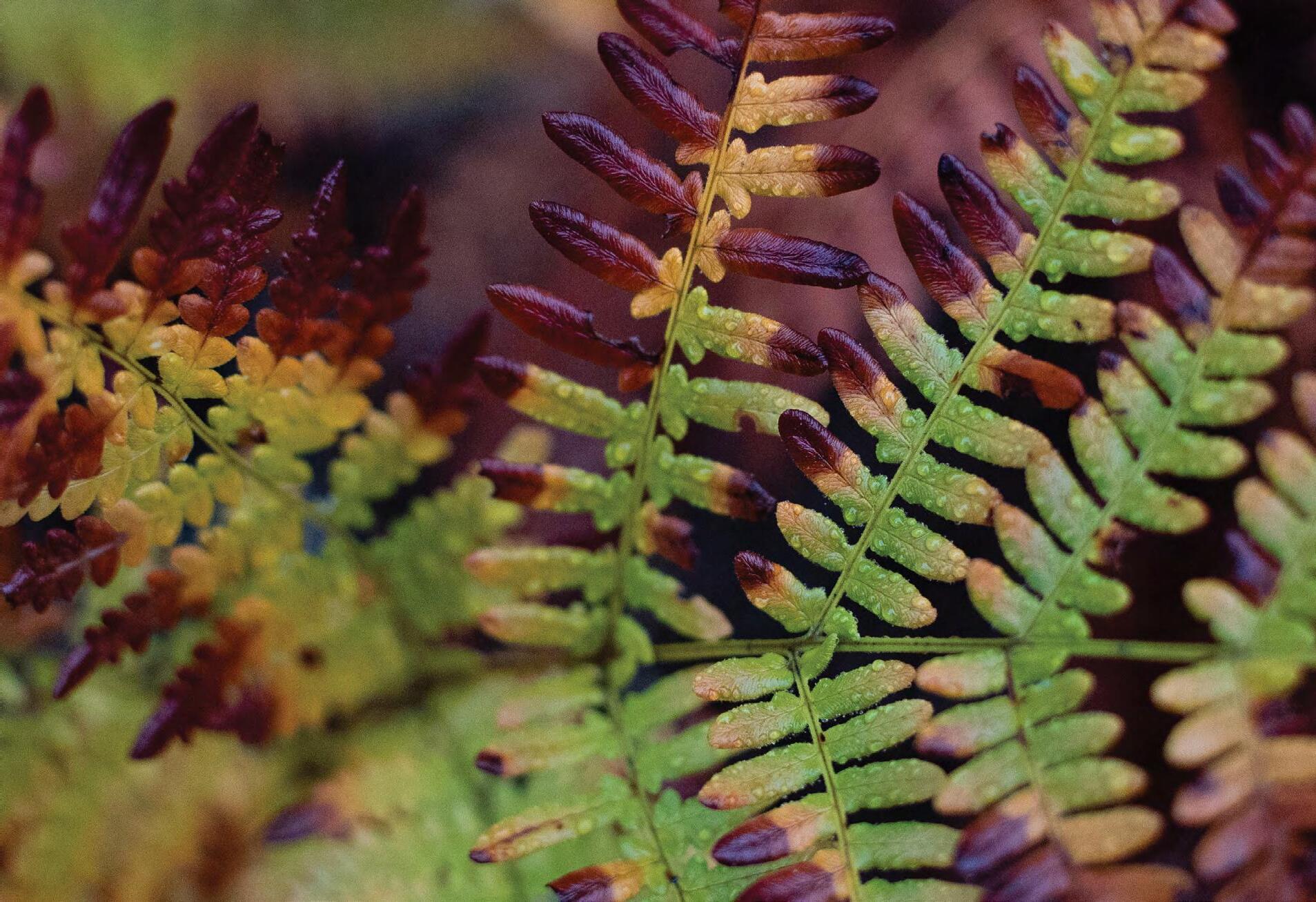
Make an impact with a gift of stock or a distribution from your donor-advised fund. And increase your impact with your company’s matching gift.
Support our future work with a legacy gift in your trust or IRA. Commitments like these will help POST continue our work for decades to come!
Learn more at OpenSpaceTrust.org/Give or call us at (650) 352-6312.
POST Tax ID Number: 94-2392007